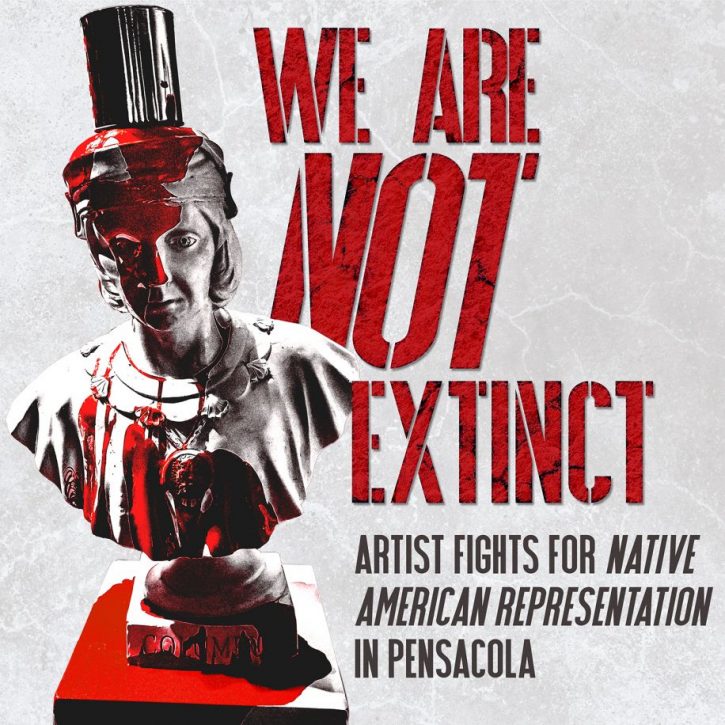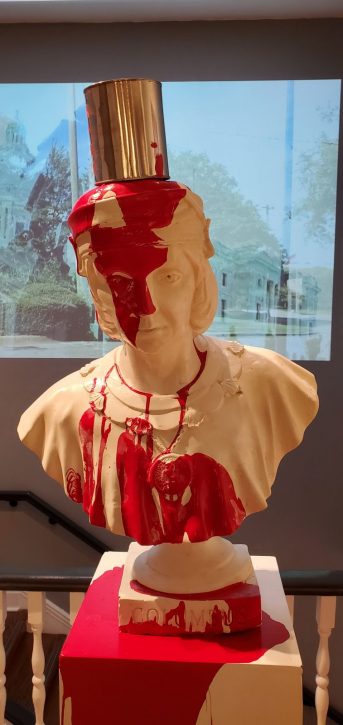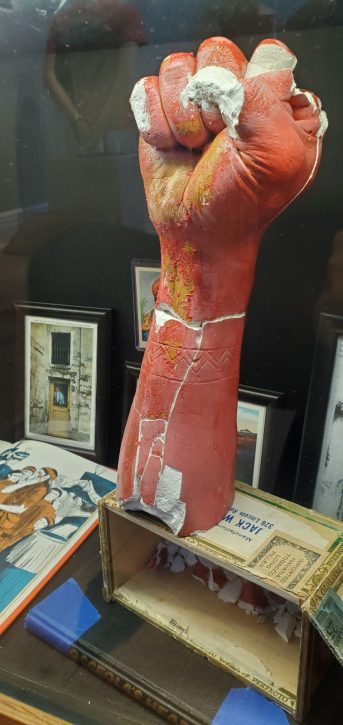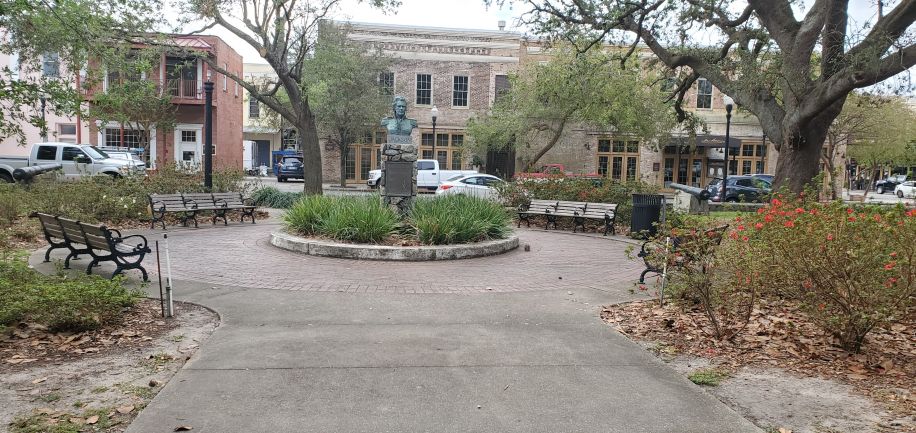
For some, looking back at the lives of ancestors is painless. A simple story about how folks made it by without the riches of the modern world. For others, looking back at ancestors is painful. A tale of trauma leaving an invisible mark on each generation. Sometimes the difference depends on one’s race, religion or class, but history haunts us all the same. Pensacola is a living example of this from the heated debates over Lee Square and Columbus Day to the death of Tymar Crawford and the uncovering of T.T. Wentworth as a member of the KKK. As the first city, Pensacola can’t run from its history, so what can it do? If you ask Sean Linezo, he’d say acknowledge it.
“If the goal is to transcend the historical trauma and racial conflict over time, the first step is acknowledgement,” Linezo continued. “Family relations and family history are not points to be argued. We are born into situations that we cannot control. No one is responsible for what their ancestors have done, but we are all responsible for how we act today. So when dealing with heritage, culture, tradition and family relations mixed with multiple generations of historical trauma and underlying systemic and institutional racism in the community, it will take time to understand each other. It will take time to heal, and in some cases, it will take more than one lifetime.”
Linezo is a Pensacola native and an internationally recognized Creative Producer. He’s planted coffee with indigenous grandmothers in the remote mountain provinces of the Northern Philippines, seen the biggest waves on the planet in Nazare, Portugal and produced films. His most recent being Going Deeper: Love letter to Nazare. Visit vimeo.com/458503213 to view.
Linezo’s most recent projects are fighting for Native American representation in Pensacola. Like many others, Linezo discovered that his family was affected by a dark moment in history: the Indian Removal Act. Seven generations ago, Linezo’s grandmother, along with her tribal sister, was forced to leave her tribe behind.
“The story Uncle Sonny told was that she and her tribal sister were put on horseback and told to follow the North Star,” Linezo said. “Ever since then, my sisters and I have always wondered, ‘Why would you ever put your children on horseback at night time and tell them to follow the North Star?’ For me the answer is always, ‘Only in the worst circumstances.’ So I have accepted that my Native American ancestors were probably involved in a worst case scenario during the time of Indian Removal in Florida.”
A unitary act of systematic genocide, the Indian Removal Act, authorized and supported by Andrew Jackson, forced Native Americans to abandon their land and trek thousands of miles West. Thousands of Native Americans were killed in the process.

“As I walked into the exhibit, the first thing I saw were the faces and names of the first three Spanish conquistadors who began colonization in Florida in 1516. I was baffled that the Native American exhibit started with the Spanish conquistadors. There are a few problems with representation here, but most simply, we should clarify that Native Americans are still alive today. The Wentworth narrative treats it as if the Native Peoples have gone extinct. As a public institution dedicated to education and local history, it seems irresponsible to leave that room open to the public.”
Linezo said that he has submitted proposals to the museum and volunteered to raise money for a re-design of that particular exhibit, but he feels the museum doesn’t take his complaints seriously.
There is so much misinformation taught about Native Americans and colonization in the U.S. For starters, Christopher Columbus didn’t discover America. People lived in the Americas for more than 15,000 years before Columbus began exploration, and the Vikings were the first Europeans to locate North America in the early 10th century. Linezo worked with the Mayor and City Council to honor Indigenous people on the second Monday in October rather than Columbus. This year marks the first of Pensacola celebrating Indigenous Peoples Day.
Perhaps another fallacy in U.S. history is the death of famous Seminole leader, Chief Osceola.
Linezo’s exhibit at the Pensacola Museum of Art (PMA) Bring Me the Head of Osceola // There is More to Remember introduces, for the first time ever, Seminole Tribe of Florida’s oral history of Osceola’s death. The official archive and academic history states that the U.S Government captured Osceola under a flag of truce and Osceola died while in prison. His head was stolen by a government appointed doctor who also made a death mask of Osceola.
Seminole medicine-man, Bobby Henry told Linezo that under a flag of truce, Osceola refused to sign a treaty that would remove his people from their ancestral lands, so the U.S. Government shot Osceola in the head and heart.
This exhibit doesn’t answer how Osceola died. Linezo’s intention is to make you wonder about the premises of his death.
“The installation in the PMA holds the official record up against itself to illustrate inconsistencies that start to make more sense when we include the previously omitted Tribal history,” Linezo said. “The death mask sculptures illustrate three versions of the same story, concerning the death of Osceola: the pop-culture legend, the peer-reviewed academic history and the tribal history, which suggests the possibility of an unsolved murder mystery in U.S. history. I put the stories side-by-side, and when you look at the evidence supported by the official archive, it makes you wonder.”

“I do support the removal of offensive monuments, but I do not think tearing them down resolves the deeper issues,” Linezo said. “It simply aggravates the other side into a defensive or reactionary position. I am offering a more playful, non-offensive and creative alternative for our heritage landscape.”
Linezo proposed this idea to the City Council in early October. He plants to have the busts at eye level engaging in a stare down. Linezo expressed in his proposal to the council the importance of the Osceola bust being the same size and made from the same material as the Jackson bust.
“Each of the figures represents an opposing view, both literally and ideologically,” Linezo explained. “By simply placing a counter monument directly in the line of sight and staring back at Jackson, a connection is suggested and a tension is generated between the two figures that would not exist if they were side-by-side or looking in different directions.”
However, his proposal doesn’t address the issue of placement. The Jackson bust sits at the center of an island in the Plaza with a path leading directly to it, which presents the bust as the focal point. Based on Linezo’s proposal, Osceola would be placed on the right hand side of the brick path that leads to Jackson. This placement could make it difficult for Plaza visitors to see the busts as equal and that they are engaging in a stare down. Linezo stated that he will not be adjusting the placement of Jackson due to costs.
“I’m trying to keep it simple as I have to get approval and permission from so many layers of people,” Linezo said. “I’m also trying to raise funds independently from a community who genuinely thinks the monument is worth investing in. I don’t want to burden the taxpayers or the politicians with any budget concerns.”
City Council, the mayor and Linezo are still discussing the proposal for the Osceola bust. Linezo’s exhibit Bring Me the Head of Osceola // There is More to Remember is available to view at the PMA until Dec. 6. He will also be discussing his exhibit with the PMA over Zoom on Nov. 5 at 6 pm. Visit this link to register for the online event.
